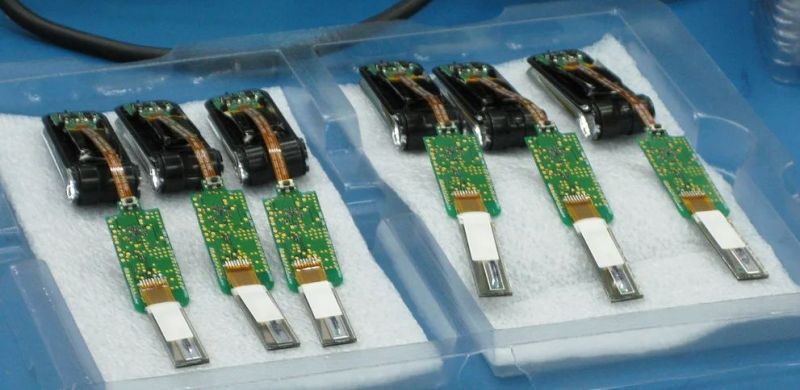It could happen to anyone of us: suddenly you got this inkling of an idea for a product that you think might just be pretty useful or even cool. Some of us then go on to develop a prototype and manage to get enough seed funding to begin the long and arduous journey to turn a sloppy prototype into a sleek, mass-produced product. This is basically the story of how the Fitbit came to be, with a pretty in-depth article by [Tekla S. Perry] in IEEE Spectrum covering the development process and the countless lessons learned along the way.
Of note was that this idea for an accelerometer-based activity tracker was not new in 2006, as a range of products already existed, from 1960s mechanical pedometers to 1990s medical sensors and the shoe-based Nike+ step tracker that used Apple’s iPod with a receiver. Where this idea for the Fitbit was new was that it’d target a wide audience with a small, convenient (and affordable) device. That also set them up for a major nightmare as the two inventors were plunged into the wonderfully terrifying world of industrial design and hardware development.
One thing that helped a lot was outsourcing what they could to skilled people and having solid seed funding. This left just many hardware decisions to make it as small as possible, as well as waterproof and low-power. The use of the ANT protocol instead of Bluetooth saved a lot of battery, but meant a base station was needed to connect to a PC. Making things waterproof required ultrasonic welding, but lack of antenna testing meant that a closed case had a massively reduced signal strength until a foam shim added some space. The external reset pin on the Fitbit for the base station had a low voltage on it all the time, which led to corrosion issues, and so on.
While much of this was standard development and testing fun, the real challenge was in interpreting the data from the accelerometer. After all, what does a footstep look like to an accelerometer, and when is it just a pothole while travelling by car? Developing a good algorithm here took gathering a lot of real-world data using prototype hardware, which needed tweaking when later Fitbits moved from being clipped-on to being worn on the wrist. These days Fitbit is hardly the only game in town for fitness trackers, but you can definitely blame them for laying much of the groundwork for the countless options today.
















I bought a couple of Fitbits at a garage sale a couple years ago.
But without the password I wasn’t able to register them Google, or even reset their time.
I have 4 dead ones om my drawer. So much money wasted…
Have they finally figured out how to make them last more than a year yet? I switched to Garmin and haven’t looked back.
I’m on year 4 with my Fitbit Inspire 2. The screen is scratched and the mount points for the strap have failed, but it still works fine. I got a different strap where the Fitbit sits in a housing, rather than being attached to the intended spots.
Yes, that’s my biggest gripe with fitbit.They probably knew that from day 1. It’s all about maximising profit. Finely engineered to get through 12 months warranty, then sell a new one based on new features.
I’ll also be buying a different brand next time, I don’t want google having my detailed health data up for sale on top of everything else they know about me.
I do not like or want the data leaving my personal device.
They could innovate by removing all of that functionality and offer a snoop free product.
I dare say it would work better as well.
Very impressive work to gather real data for refining the algorithms! my personal experience ended with the feature of location tracking; didn’t seem like a good idea to be vulnerable to the establishment. If you want another design lesson, look at the Nike Fuel-Band: the straps contain radially wrapped batteries!